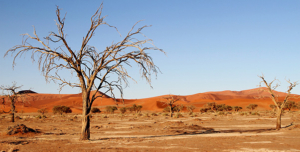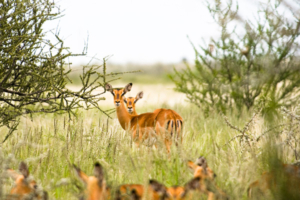Kalahari Desert
Kalahari sands cover much of eastern Namibia. They widen towards the north to include the Caprivi Strip and the Owambo Basin along with the Etosha Pan. Within southern Africa, the Kalahari is loosely thought of as a desert, but little of it really is. Only the southernmost part, with average rainfall of 150-250 mm per year inside Namibia, is dry enough to be described as a desert. The rest is semi-desert.
A vast basin in the interior of Africa south of the equator, the Kalahari reaches into parts of Namibia from its heartland in Botswana, with a mantle of parched sand that, in some places, is over 300 m deep. Virtually devoid of surface rock and stones, it is largest expanse of sand in the world, with a total area of about 930,000 sqkm. It spreads into nine countries between the Orange River and the equator.
Giraffe, eland, black and blue wildebeest, red hartebeest, Hartmann’s and Burchell’s zebra, nyala, blesbok, springbok, impala, oryx, kudu and steenbok can be observed, although sightings cannot be guaranteed. Smaller mammals such as pangolin, porcupine, warthog and aardvark live in and around the region. Ostrich, as well as many smaller species of Namibian birdlife including water birds in the rainy season, can also be observed.






